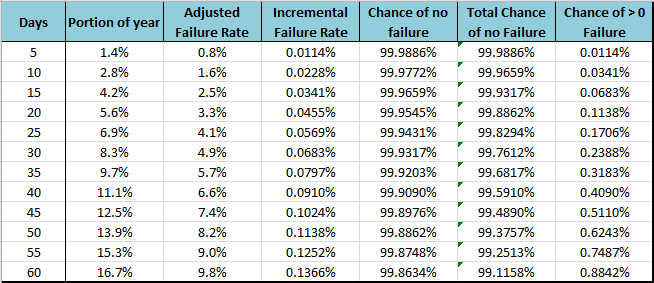Does this mean the wiki is wrong? It claims the following:
(AFR, the chance of a spacecraft component failing based on a one year duration)
You seem to suggest here that AFR is the chance each increment that something will fail here after it's gone a year deployment?
Even with 59% per year it should mean 15% per 3 months, which means 15% of your fighters should have damaged components after that low risk trip. If the failing component happens to be engines on any of them they are at big risk for secondary explosions due to normal high power of the engines.
I haven't read the wiki

The base failure rate increases as a ship spends more time away from port. The chance of a failure is equal to Base Class Failure Chance * Years Since Overhaul * Portion of Year in 5-day Increment.
For example, if a class has an annual failure rate of 50% and has been away from port for exactly three months when a production phase takes place. The failure rate at that point is 50% * 0.25 = 12.5%. If the 5-day increment at that point is exactly five days, the chance of failure in that single increment is 5/360 * 12.5%.
If the same ship has been away from port for three years, the chance would 50% * 3 = 150% * 5/360. If you check the ship display rather than the class, the exact current failure rate is displayed
So a fighter with an annual failure rate of 59% would only have a failure rate of 4.9% after a month in space and 14.75% after three months.
So for a single fighter with an annual failure rate of 59%, the chance of at least one failure in a 60-day journey (starting with zero deployment and assuming exact 5-day increments) would be about 0.88%
